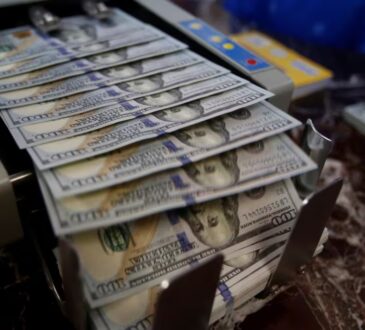As of April 2025, several African countries have maintained strong currencies against the U.S. dollar, reflecting various degrees of fiscal discipline, monetary policy effectiveness, and economic structure.
Currency strength remains one of the key indicators of a country’s economic health and stability.
According to the Forbes currency calculator, these are the strongest currencies in Africa
Read also: Top 10 strongest currencies in Africa as of March 2025
1. Tunisia – Tunisian Dinar (TND)
Exchange Rate: 2.95 TND per USD
Tunisia tops the list once again, with the Tunisian Dinar holding its position as the strongest currency in Africa. This resilience is partly due to the country’s strict exchange control regulations and efforts to control inflation, despite political and economic challenges.
2. Libya – Libyan Dinar (LYD)
Exchange Rate: 5.46 LYD per USD
Despite its prolonged political instability, Libya’s currency remains surprisingly strong. A large part of this can be attributed to the country’s vast oil reserves, which continue to provide substantial foreign exchange earnings.
Read also: 20 African countries with stronger currencies than the Naira
3. Morocco – Moroccan Dirham (MAD)
Exchange Rate: 9.24 MAD per USD
Morocco’s stable macroeconomic environment, diversified economy, and sound monetary policy have helped the Dirham retain significant strength. The country continues to attract foreign investment, particularly in renewable energy.
4. Botswana – Botswana Pula (BWP)
Exchange Rate: 13.77 BWP per USD
Known for its governance, Botswana’s currency remains one of the strongest in Sub-Saharan Africa. Its reliance on diamond exports is balanced by strong fiscal and monetary policy frameworks.
5. Seychelles – Seychellois Rupee (SCR)
Exchange Rate: 14.22 SCR per USD
This island nation’s economy is heavily reliant on tourism and fisheries, but its central bank has managed to keep inflation relatively low. The Rupee remains strong thanks to foreign exchange controls and a floating exchange rate regime that adapts to market realities.
Read also: Nigeria and Ghana currencies seen stable on central bank support, say fx traders
6. Eritrea – Eritrean Nakfa (ERN)
Exchange Rate: 15.00 ERN per USD
Although Eritrea has a closed and heavily controlled economy, its fixed exchange rate has kept the Nakfa relatively stable. However, this strength is largely artificial and doesn’t always reflect the currency’s true value on the black market.
7. Ghana – Ghanaian Cedi (GHS)
Exchange Rate: 15.46 GHS per USD
Ghana’s Cedi has endured its fair share of volatility, but recent reforms and IMF support have brought some stability. The government’s efforts to control inflation and manage public debt are beginning to show positive effects.
8. South Africa – South African Rand (ZAR)
Exchange Rate: 18.62 ZAR per USD
As one of the most traded currencies on the continent, the Rand is influenced by global markets and investor sentiment. Despite economic headwinds, it remains relatively strong due to its liquidity and the size of South Africa’s financial sector.
Read also: The 8 oldest currencies still in use around the world
9. Namibia – Namibian Dollar (NAD)
Exchange Rate: 18.77 NAD per USD
Pegged to the South African Rand, the Namibian Dollar mirrors its southern neighbour’s strength and vulnerabilities. The peg ensures stability but also exposes Namibia to external shocks affecting South Africa.
10. Lesotho – Lesotho Loti (LSL)
Exchange Rate: 18.77 LSL per USD
Like Namibia, Lesotho’s currency is pegged to the Rand. This arrangement facilitates trade and financial coordination within the Common Monetary Area, but it also means Lesotho’s currency strength is largely dependent on South Africa’s economic performance.




